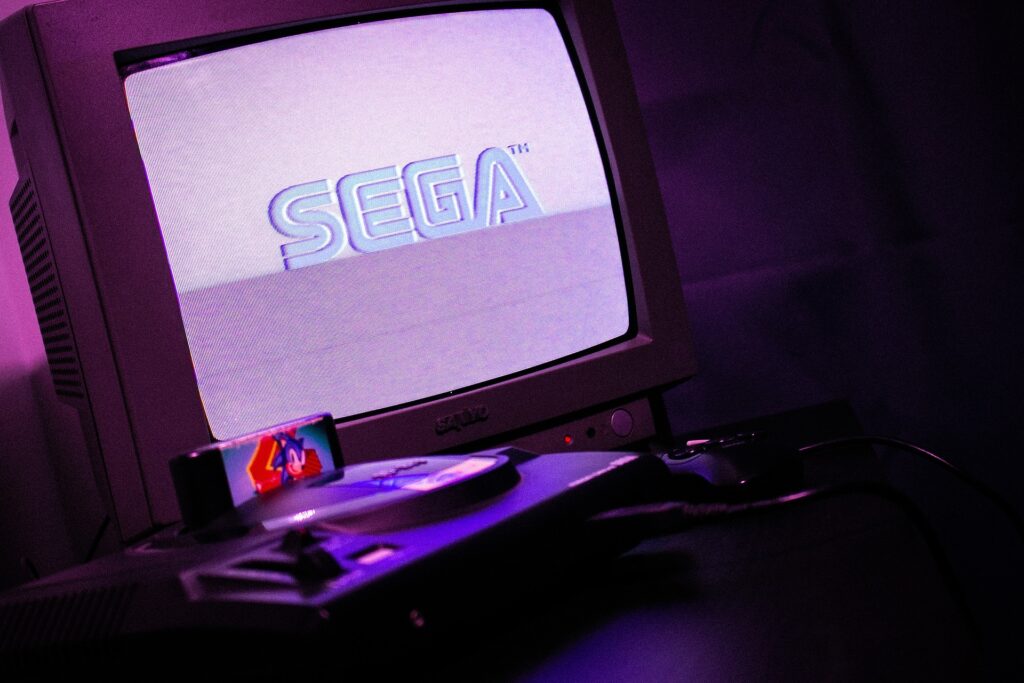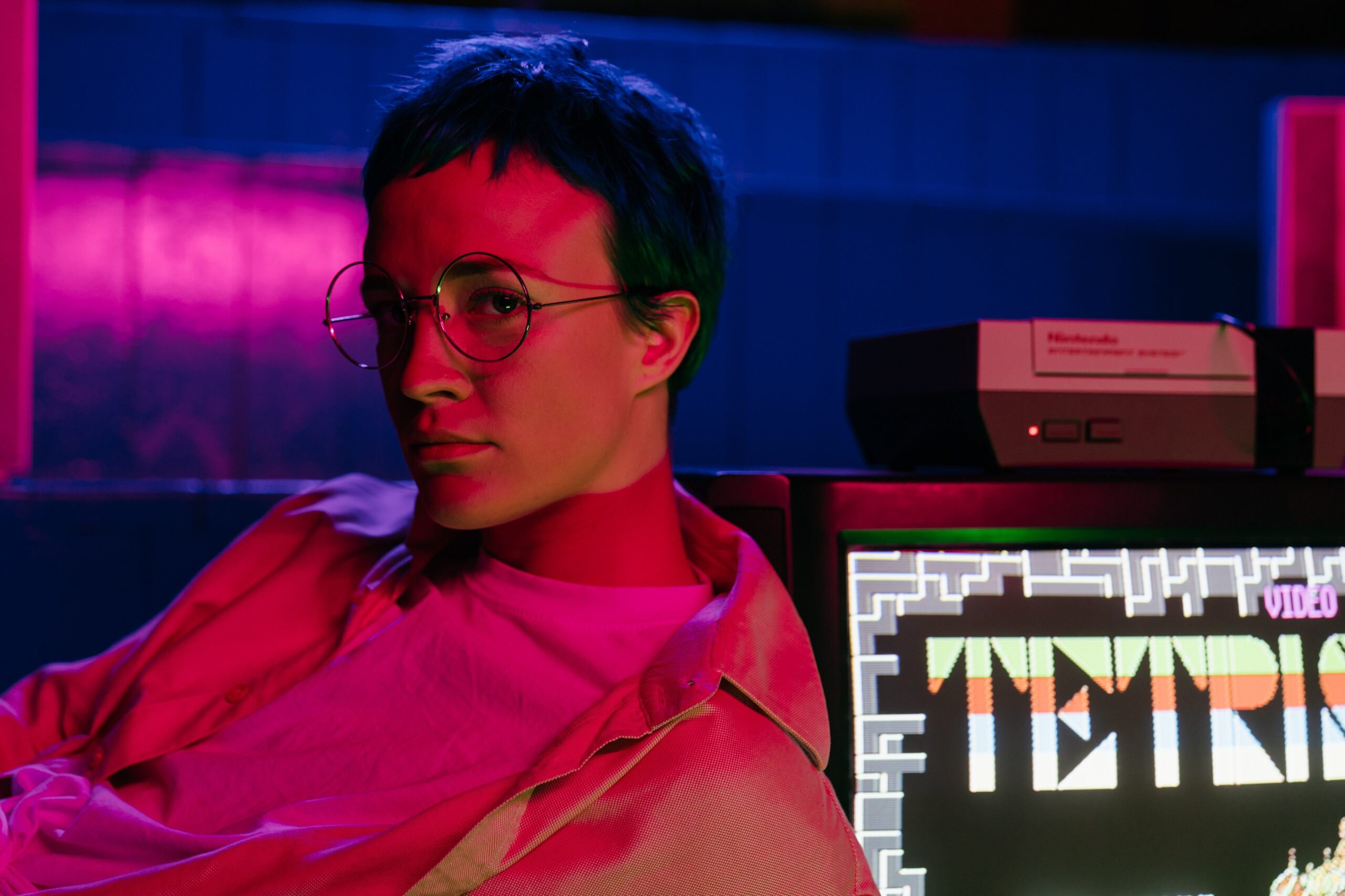Back in the day, CRT (Cathode Ray Tube) TVs were the standard display technology for watching television and playing video games. They ruled the living room during the era of old video games, like the NES, Sega Genesis, and the original PlayStation. With the rise of modern flat-screen TVs, many gamers wonder why old video game graphics looked better on CRT TVs. This essay will explore the reasons behind this phenomenon, which include the inherent characteristics of CRT technology, the design of video games during that era, and the nostalgic factor associated with these displays.
Characteristics of CRT technology that enhanced old video game graphics
High contrast ratio
CRT TVs were known for their high contrast ratio, which resulted in deeper blacks and brighter whites. This enhanced the perception of detail and color depth in old video games. Modern flat-screen TVs often struggle to achieve the same level of contrast, which can make old video game graphics appear washed out or less defined.
Scanlines
Scanlines were horizontal lines that were visible on CRT displays due to the way the electron beam scanned the phosphor coating on the screen. These lines had the effect of softening and blending the pixel art and low-resolution graphics commonly found in old video games. This created a more cohesive and visually pleasing image, which is often lost on modern displays that lack scanlines.
Faster refresh rates
CRT TVs had faster refresh rates than many modern displays, which reduced motion blur and screen tearing in fast-paced video games. This made games like Sonic the Hedgehog and F-Zero more enjoyable to play, as the on-screen action was smoother and more responsive.
Design of old video games optimized for CRT TVs
Lower resolutions
Old video games were designed with lower resolutions in mind, which suited the capabilities of CRT TVs. Modern displays often struggle to display these low-resolution graphics effectively, leading to a blurry or pixelated image. CRT TVs, on the other hand, were able to handle these graphics with ease, producing a sharp and clear image that was more visually appealing.
Color palettes
Early video games had limited color palettes due to hardware constraints. CRT TVs excelled at displaying these limited colors, with vibrant hues and smooth color transitions that made the games look better than they would on modern displays. This is particularly evident in games like Super Mario Bros., where the bright colors and simple graphics stand out on a CRT TV.
Artistic techniques and visual tricks
To compensate for limited color palettes and low-resolution graphics, game developers employed various artistic techniques and visual tricks. These included dithering, which involved placing different colored pixels close together to create the illusion of additional colors or shades. CRT TVs were able to amplify these effects, further enhancing the visual quality of old video games.
The nostalgic factor and emotional attachment to CRT TVs
The role of nostalgia in the appreciation of old video games
Nostalgia plays a significant role in the appreciation of old video games, as many gamers grew up playing these games on CRT TVs. This connection between early gaming experiences and CRT TVs can influence the perception of image quality, making the graphics appear better on CRTs due to the emotional attachment and memories associated with these displays.
The resurgence of CRT TVs among retro gaming enthusiasts
In recent years, there has been a resurgence of interest in CRT TVs among retro gaming enthusiasts. These individuals often seek to preserve and restore CRT TVs to recreate the authentic gaming experience of their youth. Nostalgia is a driving force behind this CRT TV revival, as the unique visual characteristics of these displays are deeply ingrained in the memories of many gamers.

Challenges and limitations of modern displays for displaying old video game graphics
Scaling issues
One of the main challenges modern displays face when displaying old video game graphics is scaling. Pixel-perfect scaling is difficult to achieve on modern displays, which can result in a stretched or distorted image. Scaling algorithms attempt to address this issue, but they often introduce artifacts or blur the image, detracting from the visual quality of the game.
Input lag and response times
CRT TVs have virtually no input lag and fast response times, which are essential for a responsive gaming experience. Modern displays, particularly LCD and LED TVs, often suffer from higher input lag and slower response times. This can negatively impact gameplay, especially in fast-paced or competitive games where quick reactions are crucial.
Loss of visual effects and techniques
Many visual effects and techniques that were specifically designed for CRT TVs, such as scanlines and dithering, are lost on modern displays. While some emulation software and filters attempt to recreate these effects, they often fall short of replicating the authentic CRT experience.
Emulation and modern solutions to preserve the CRT experience
Software-based CRT emulation
Emulation software often includes filters and shaders that mimic the visual characteristics of CRT TVs, such as scanlines and phosphor glow. These tools can help recreate some of the nostalgic charm of playing old video games on CRT TVs, but they have their limitations and cannot perfectly replicate the experience.
Dedicated hardware
FPGA-based solutions, like the Analogue Super Nt or the MiSTer project, recreate classic console hardware with high accuracy. These devices often have low latency and can provide a more authentic gaming experience when paired with a CRT TV or a compatible modern display.
Modern display technology developments
OLED displays show promise in recreating some CRT-like characteristics, such as deep blacks and high contrast ratios. As display technology continues to evolve, there may be a future where modern displays can more accurately reproduce the unique visual qualities of CRT TVs for retro gaming enthusiasts.
The cultural impact of CRT TVs and old video game graphics
The influence on modern game design
The distinctive look of old video game graphics on CRT TVs has inspired many modern game developers to create pixel art and retro-inspired games. Titles like Shovel Knight and Celeste utilize CRT-like visual effects, paying homage to the classic gaming era while taking advantage of modern game design techniques.
The role of CRT TVs in gaming history
CRT TVs played a significant role in shaping the gaming industry and influenced the design choices of game developers during the early years of video gaming. The limitations and unique characteristics of CRT TVs helped to define the visual style of many classic games, which continues to inspire and influence modern game design.
The preservation of gaming history
Museums, collectors, and enthusiasts are making efforts to preserve CRT TVs and old video games to maintain the authentic gaming experience for future generations. This preservation work is essential in understanding the history of video game technology and the evolution of the gaming industry.
Case studies: Examples of classic games that excel on CRT TVs
Super Mario Bros. (NES)
Super Mario Bros. is an iconic example of how CRT TVs can enhance the visual quality of old video games. The use of color and dithering techniques in the game’s graphics is amplified on a CRT display, creating a vibrant and nostalgic gaming experience.
Sonic the Hedgehog (Sega Genesis)
Sonic the Hedgehog benefits greatly from the high refresh rates and reduced motion blur provided by CRT TVs. The fast-paced gameplay and vibrant colors truly shine on a CRT display, contributing to the game’s enduring popularity and visual appeal.
Street Fighter II (Arcade)
CRT TVs were the backbone of the arcade gaming scene, where titles like Street Fighter II gained massive popularity. The visual quality and responsiveness of CRT displays were essential for the success of fighting games, as they allowed for precise control and accurate timing during heated battles.
Final thoughts
The enduring appeal of CRT TVs for old video game graphics is a testament to the unique visual characteristics and nostalgia associated with these displays. While modern display technologies continue to evolve, they have yet to fully replicate the authentic CRT experience that many gamers hold dear.
The lessons learned from the CRT era have had a lasting influence on modern gaming, from inspiring pixel art and retro-inspired games to reminding us of the importance of low input lag and fast response times. As we continue to move forward, it is essential to maintain the heritage and history of video gaming technology, ensuring that future generations can appreciate and understand the origins of the gaming experiences we enjoy today.
By preserving CRT TVs and old video games, we not only honor the past but also enrich the present, as these relics of gaming history can still provide unique and enjoyable experiences for gamers of all ages. As nostalgia continues to fuel the resurgence of CRT TVs and retro gaming, it is clear that the charm and appeal of old video game graphics on CRT displays will endure for years to come.
